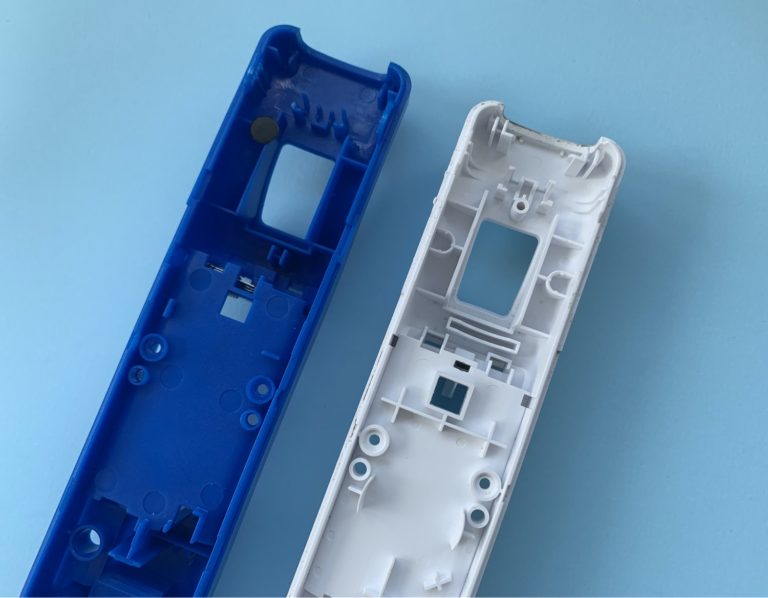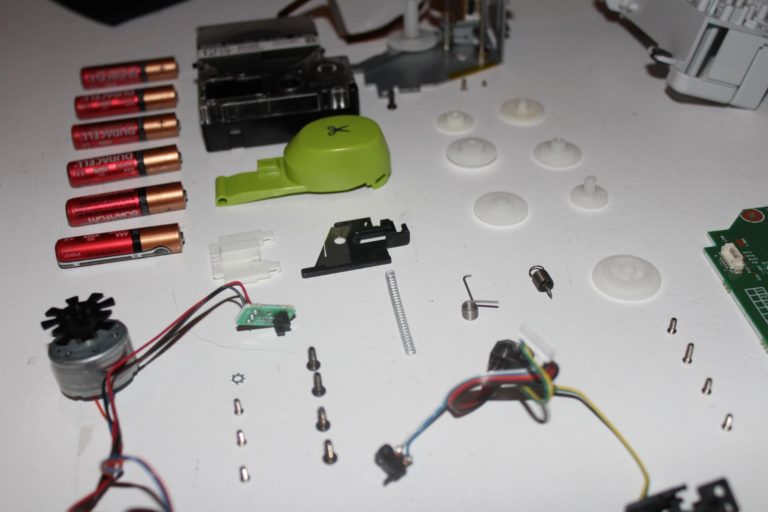For this edition of our Hardware DNA series we’re taking apart a very unique product: The Muse brain sensing headband.
What the heck is a brain sensing headband, you ask? Well, essentially it uses sensors to measure brain activity across your frontal cortex and then, using the app, gives you real-time feedback on what’s happening in your brain during meditation. Cool!
We know we could use a bit more zen in our lives, so before we take it apart we had to give it a try:

Okay, maybe it wasn’t super helpful to have Drake jammin’ in the background at the same time, but we did get a sense of the calming experience and found the headband to be quite comfortable and light.
Let’s dive in and take a look at how this modern mediation product is made.
Packaging

Our first impression of the packaging is that it would look really nice on a display shelf in Best Buy (as long as they don’t slap an awful sticker across the front).

Looking a little bit more closely, however, we notice that the product is held down by… tape!


Their engineering team probably thought the vacuum formed plastic would hold the product in snuggly, and then after a shake/drop test realized the headband actually came loose. Tape (and glue) fix all last-minute engineering troubles!
There’s also this slightly awkward pink tab that indicates how the packaging should be separated:

And then, when we take the casing out of the box, the cord is unravelled messily:

Maybe we’re being overly critical, but the first impression of the packaging was so positive only to find the finer details amis.
Also, it’s just a bit much — there’s so much packaging!
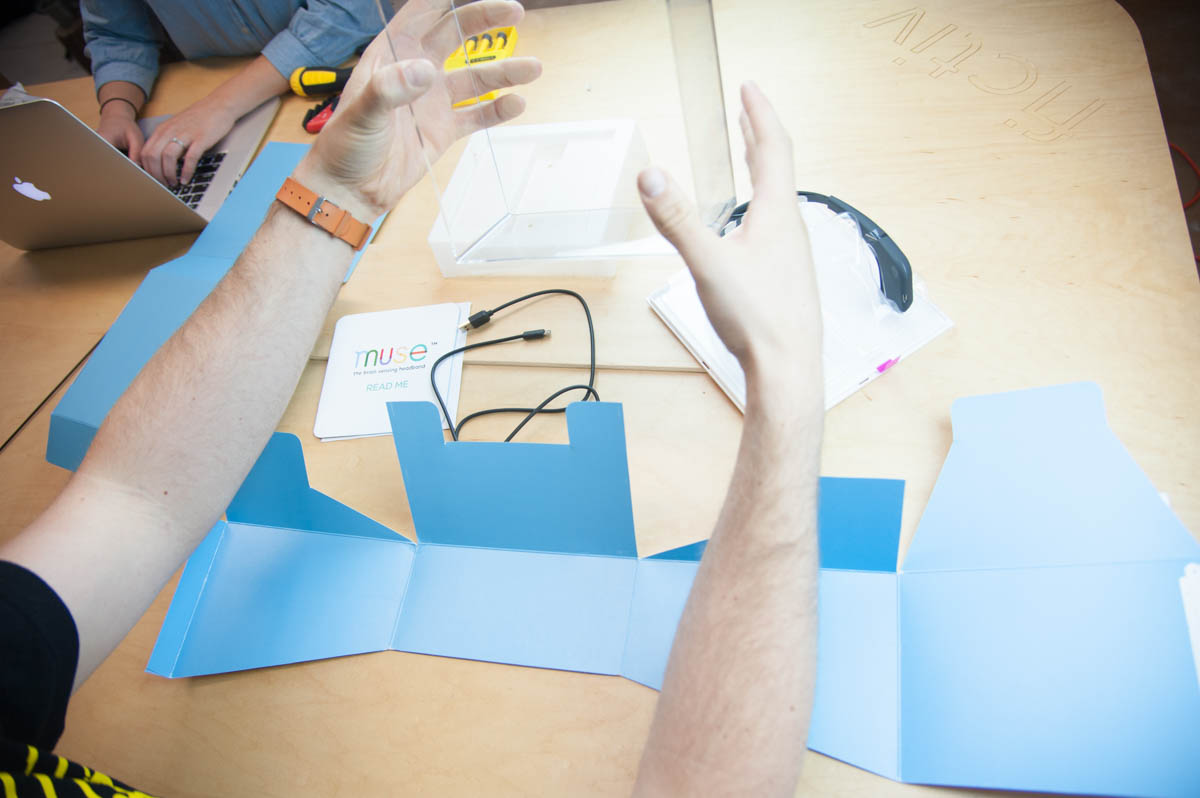
Okay, let’s take a look at the headband itself.
Headband
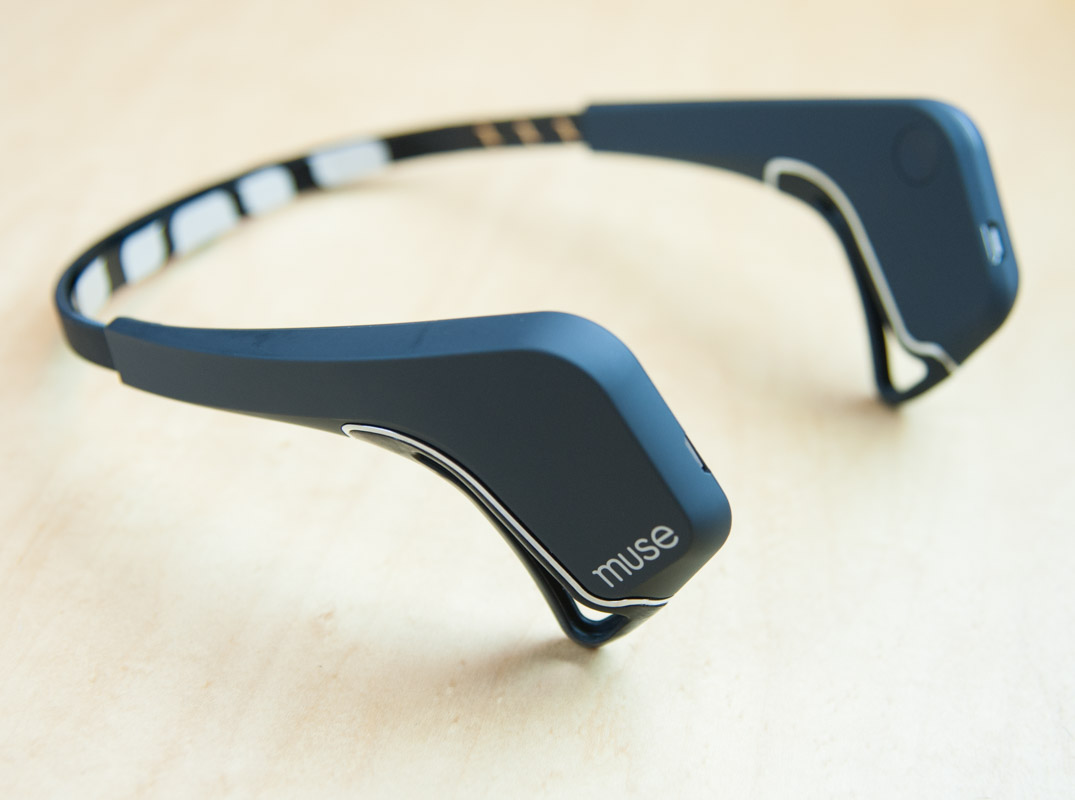
The cosmetic surface of the product is really nice; the high quality feel is achieved with a soft touch paint and feels quite luxurious and, well, soft to the touch.
First we take a look at the external ear piece, which is overmolded rubber (about a shore 70A) on an injection molded ABS plastic piece with a chrome finish.
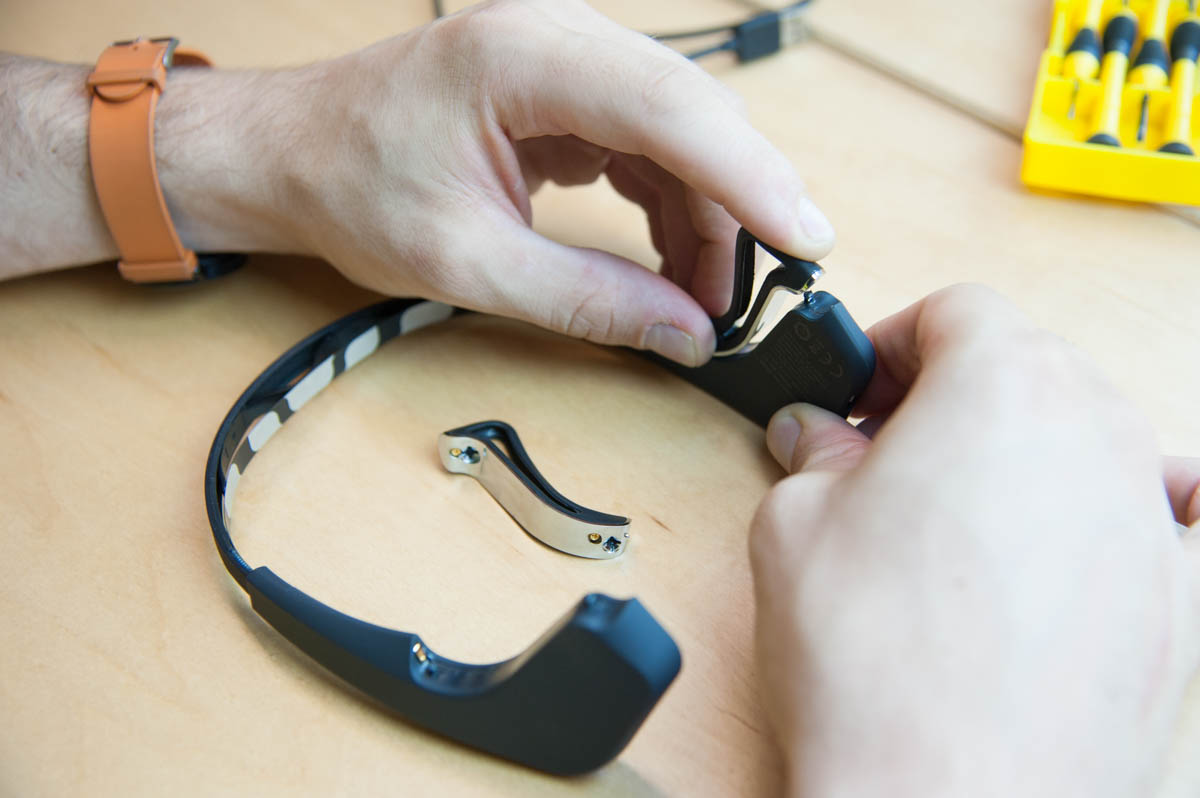
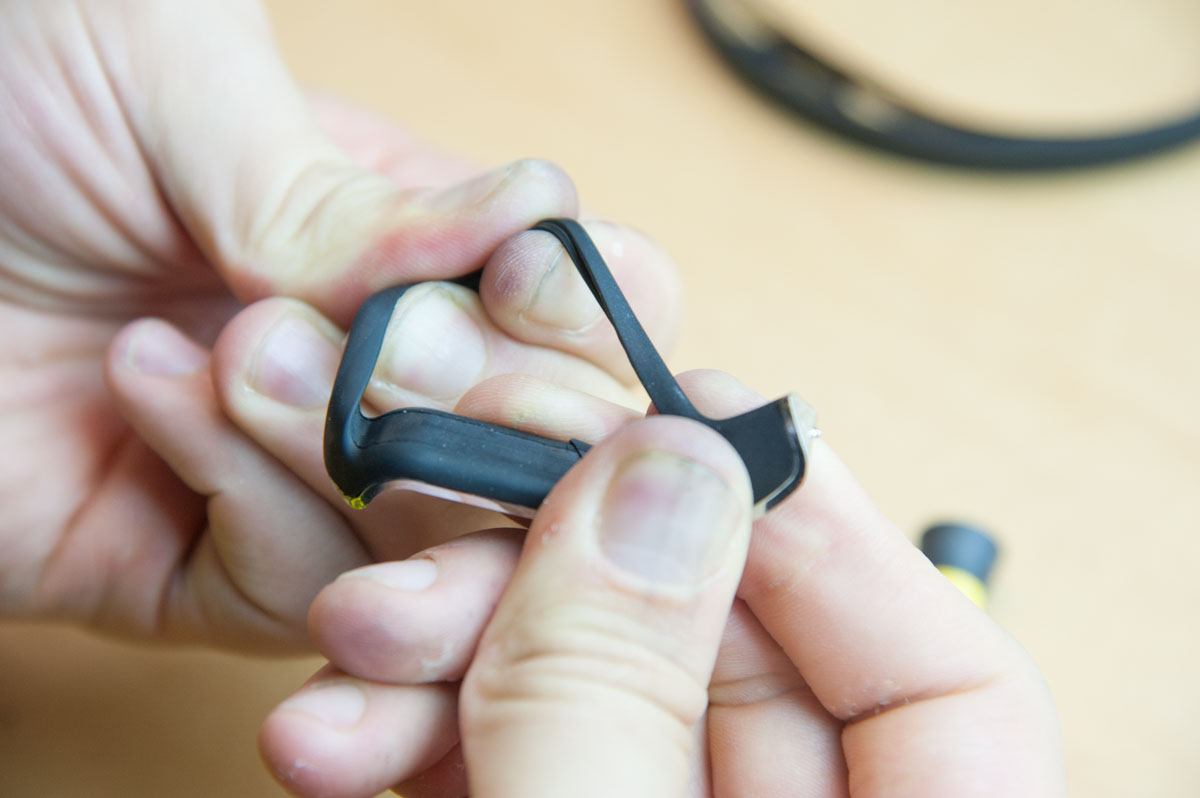
After removing the earpiece, it became evident that the chrome piece was injection molded and the rubber strap was co-molded over top. Inside of the co-molded piece we also found 2 brass threaded inserts. They could have done without the screws to attach the overmolded rubber, but the extra fasteners likely ensured the bond won’t come undone overtime.
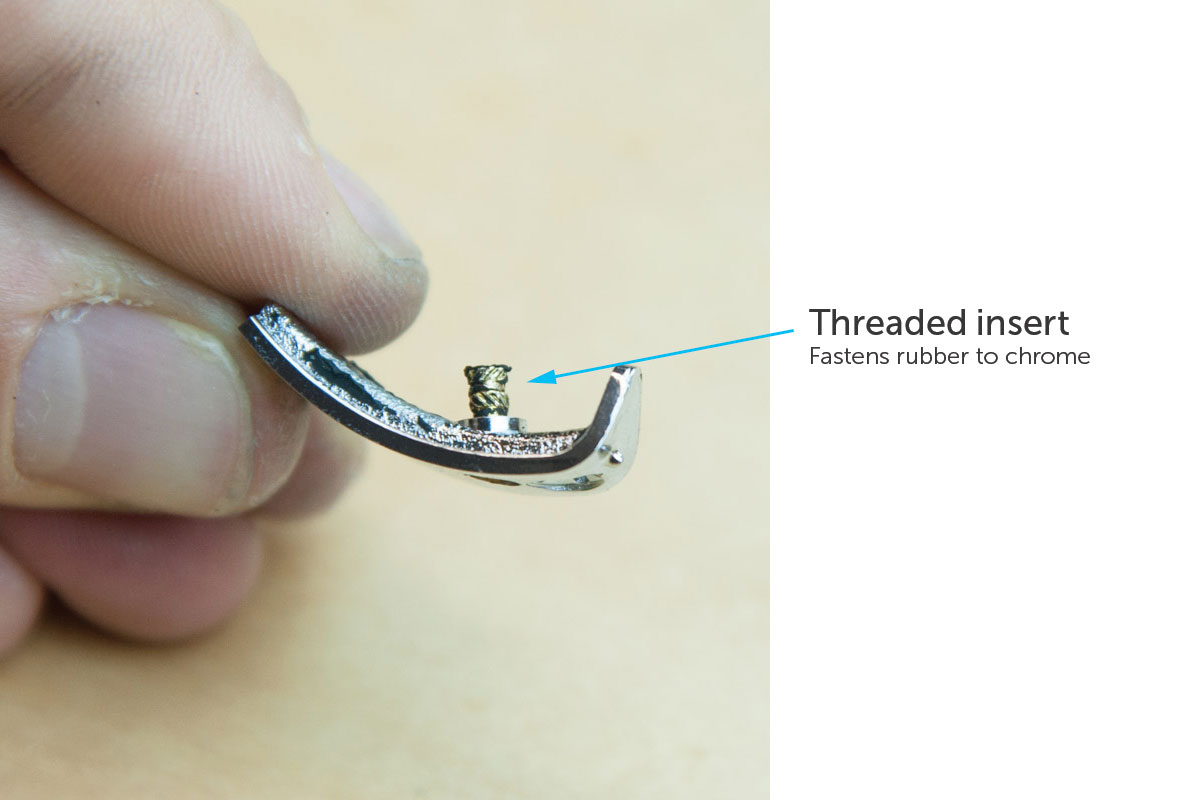
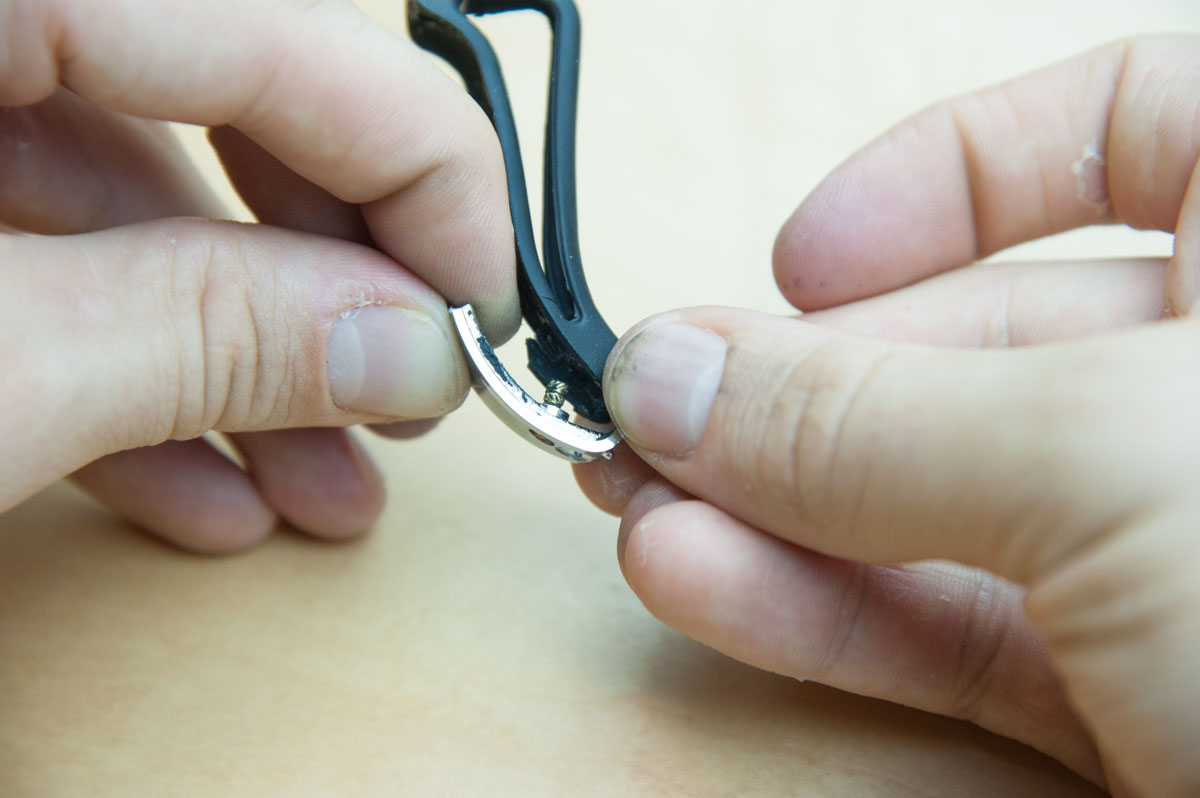
Moving to look inside the band, we see there are no screws — from a design perspective, it looks magically seamless with very intentionally placed parting lines along the edge.
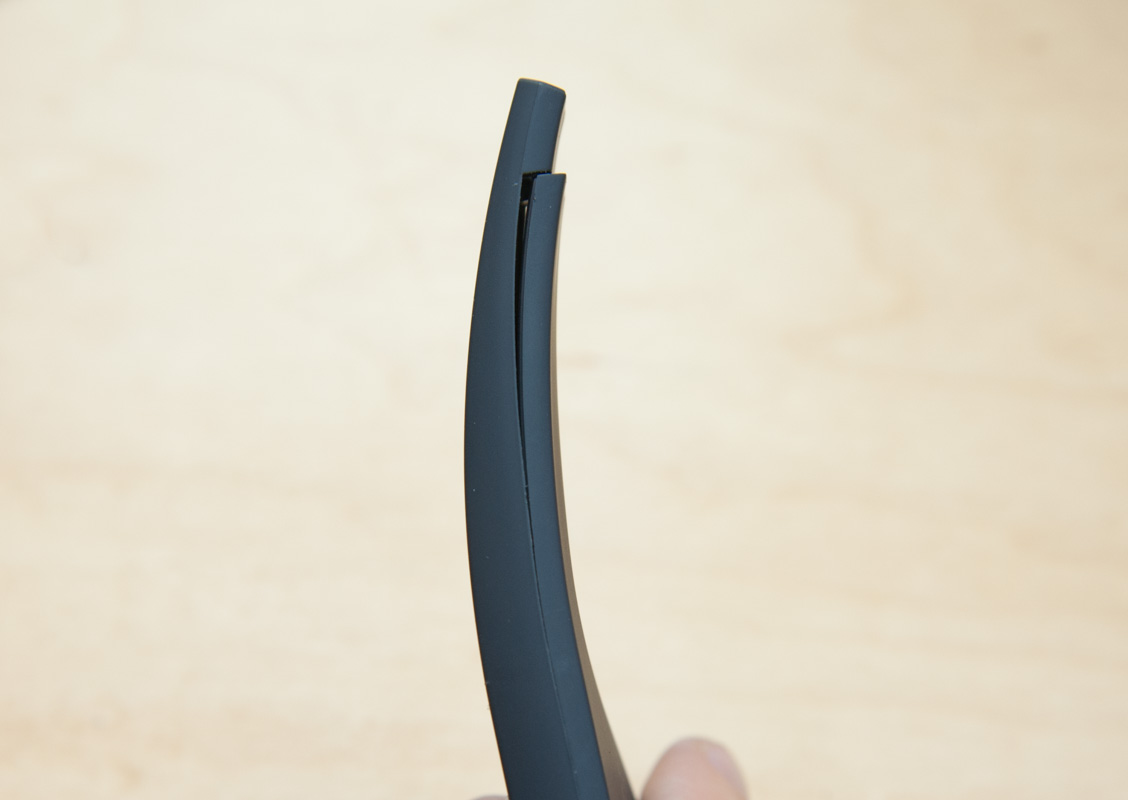
As we pull the panels apart, we can hear all the snap fits — kind of reminds us of an automotive door panel. These snap fits were designed to be permanent and have a strong holding force.
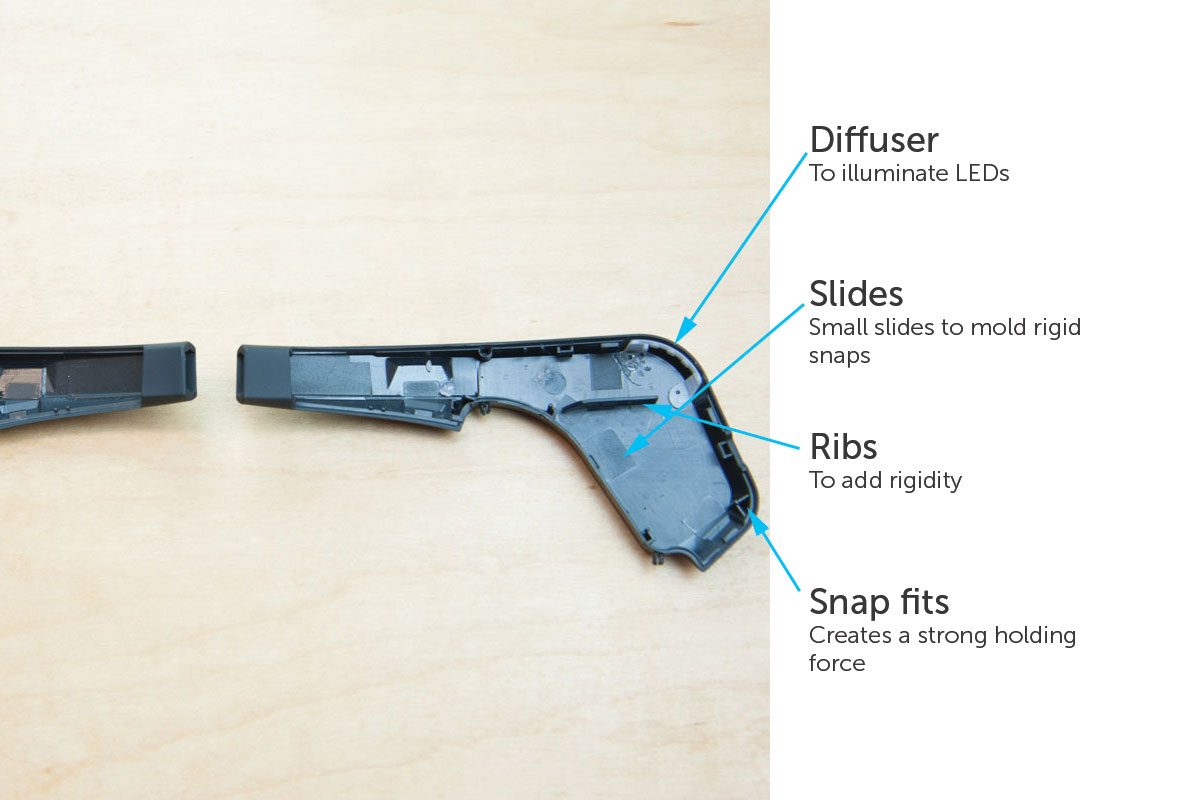
The wall thickness here is variable — 1mm – 1.5mm and then the ribs on the inside are .6mm. This part would have been injection molded with lots of small slides and actions because of the rigid snaps, which make for efficient assembly, but probably a more expensive injection molding tool.
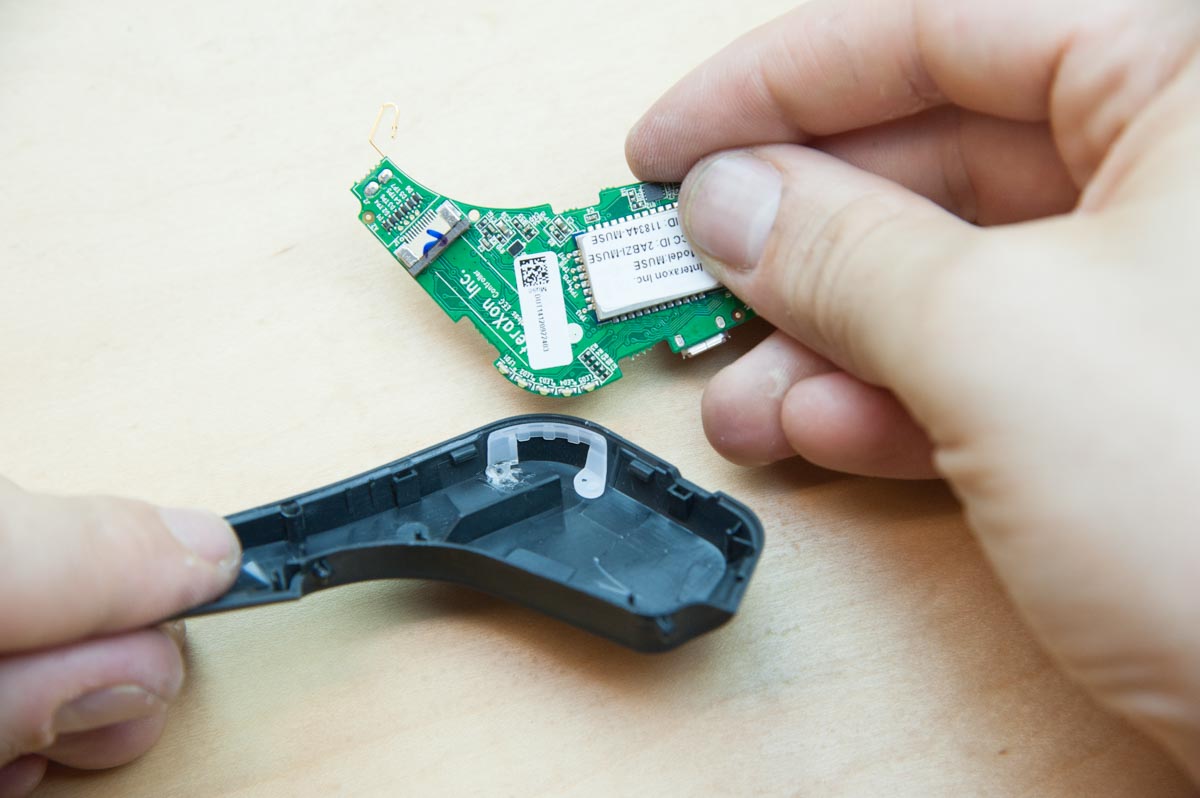
Inside the panel we find a piece of glued-on clear plastic, which acts as a diffuser for the 4 LEDs on the edge of the circuit board.
We also find a flexible sensor that runs all the way through the band and connects to 2 PCBs located in each ear piece. This flexible sensor is what picks up your brain waves and then translates information to the government. Just kidding.
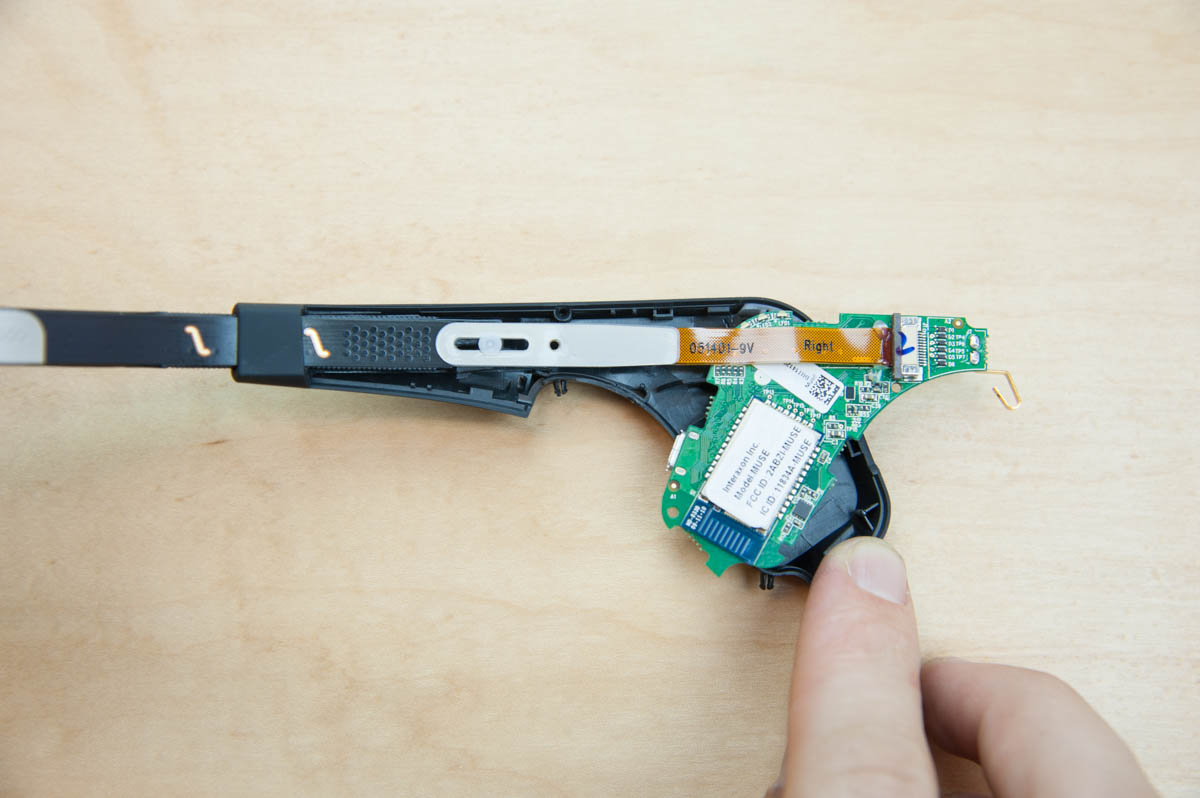
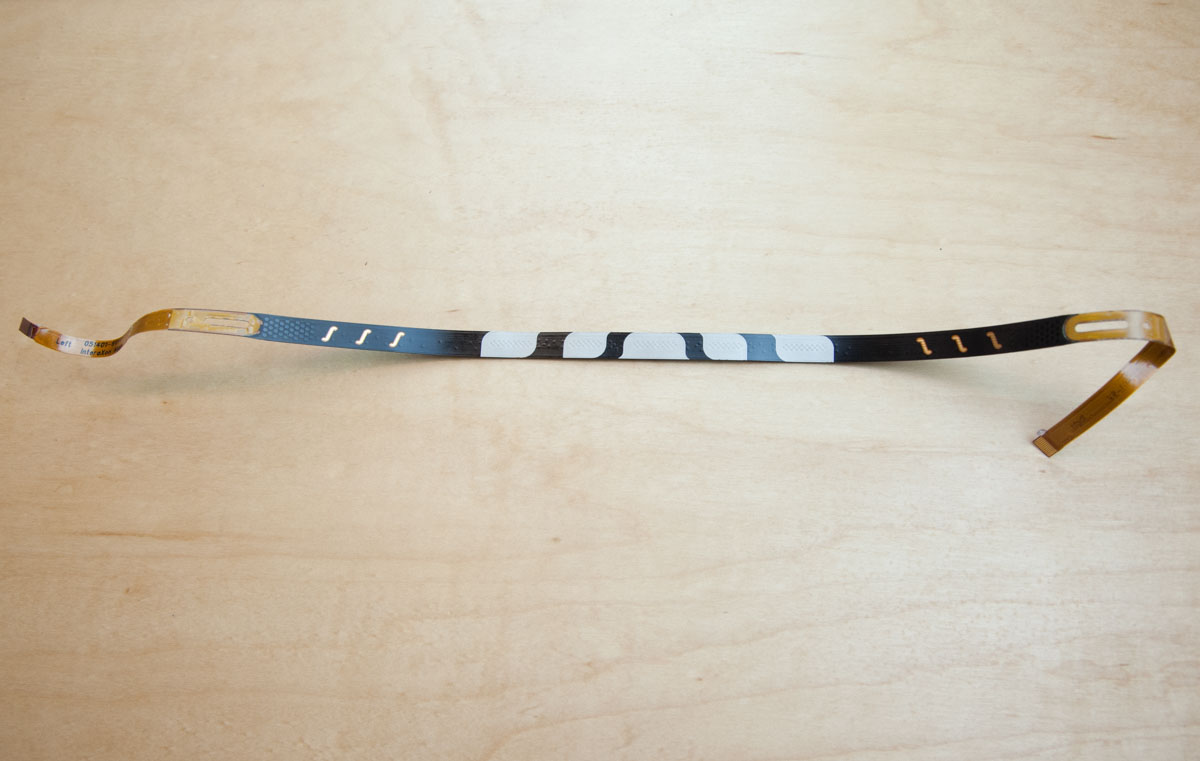
On the opposite ear panel we find a neat spring mechanism that pushes a simple on/off button on the inside.
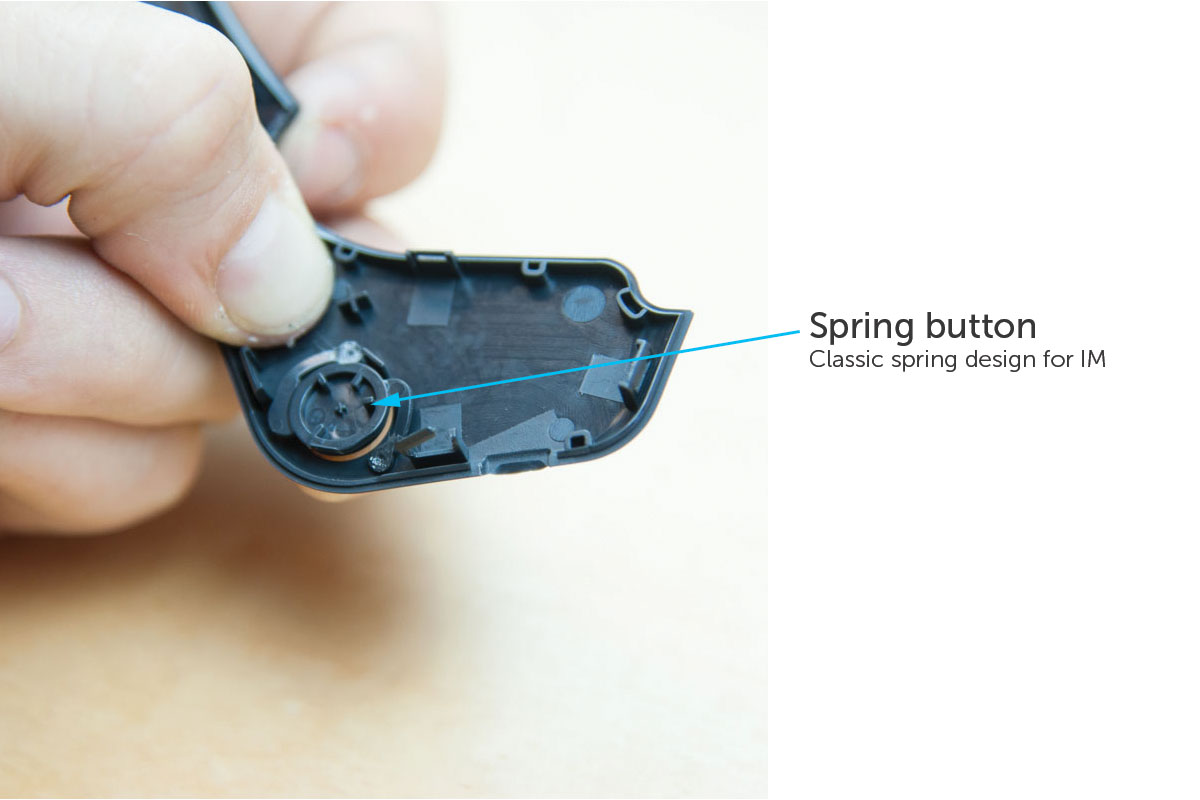
This is a classic spring design for injection molded parts and if you’re looking to add a similar button, make sure to take notes. 🙂
Taking a closer look at the circuit board, pictured below, we see:
- 3.7V battery with 0.925Wh
- PIC24 microcontroller
- OPA376 TI OpAmp
- RN42 bluetooth chip
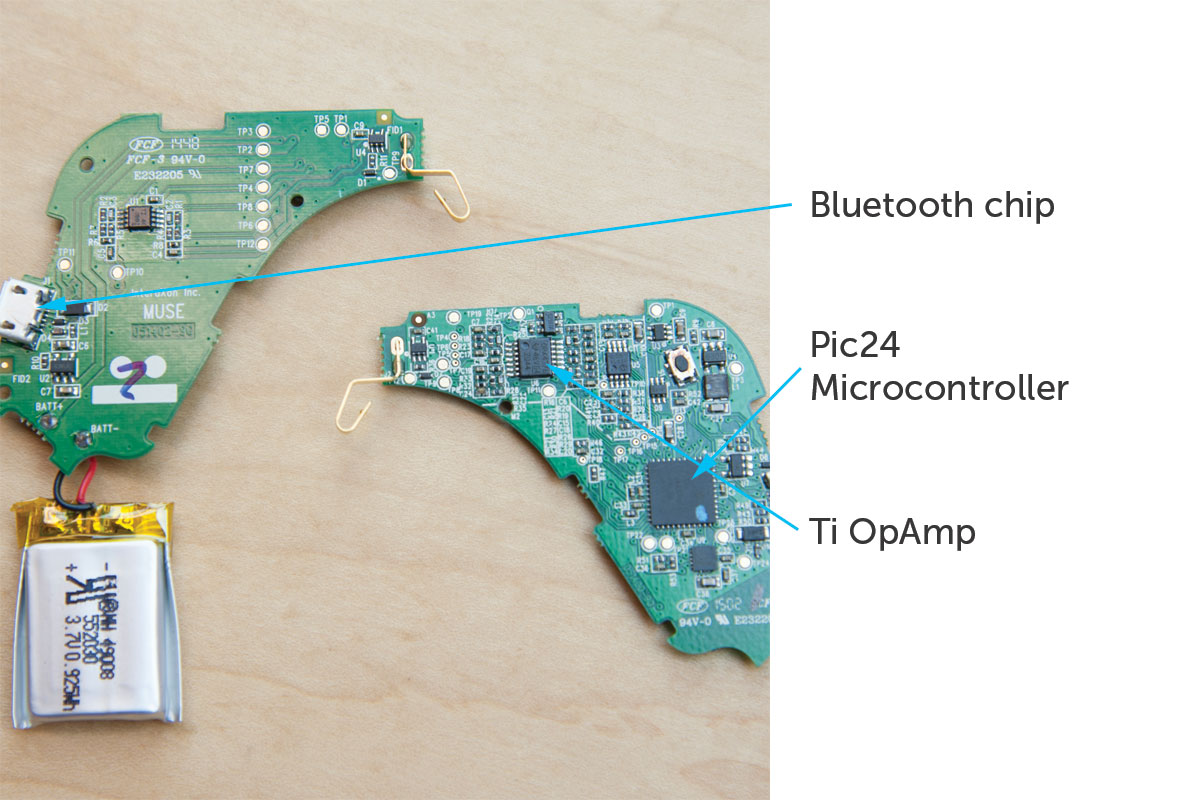
We also found a really neat fit mechanism inside the band:
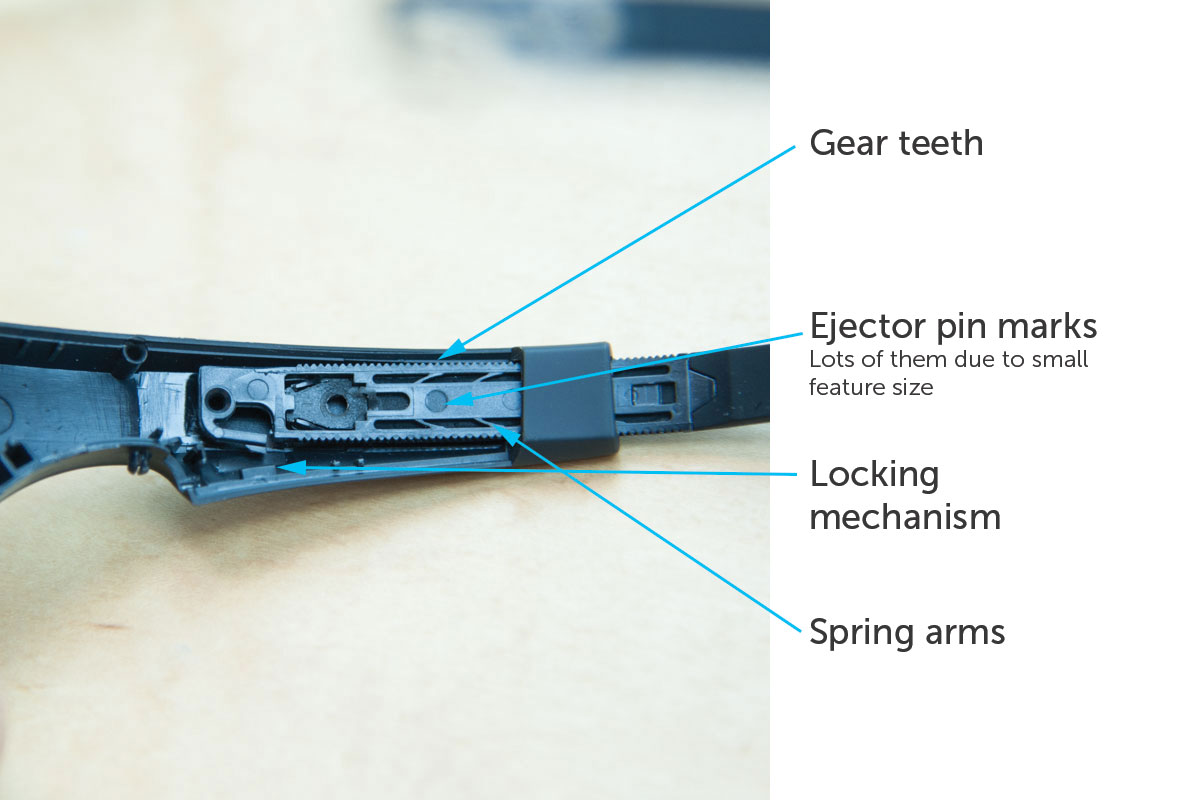
This mechanism uses a bunch of tiny teeth, which rub along the enclosure like a zip tie so it’s easyq to push the band down and move the mechanism back and forth, but doesn’t budge otherwise.
The band itself is actually multiple pieces which are mechanically fastened together and then bonded with an adhesive. They use an angled edge, with very thin ‘spring arms’ to easily adjust the fitting on the band. Really great mechanical design here.
Overall the product is beautifully manufactured with great execution on both the industrial design and engineering fronts. The tolerances are excellent so the parts mate together really well with snap fits and the resulting product looks and feels expensive.
We’re not sure about the whole meditation thing yet, but this product has us both impressed and intrigued.









